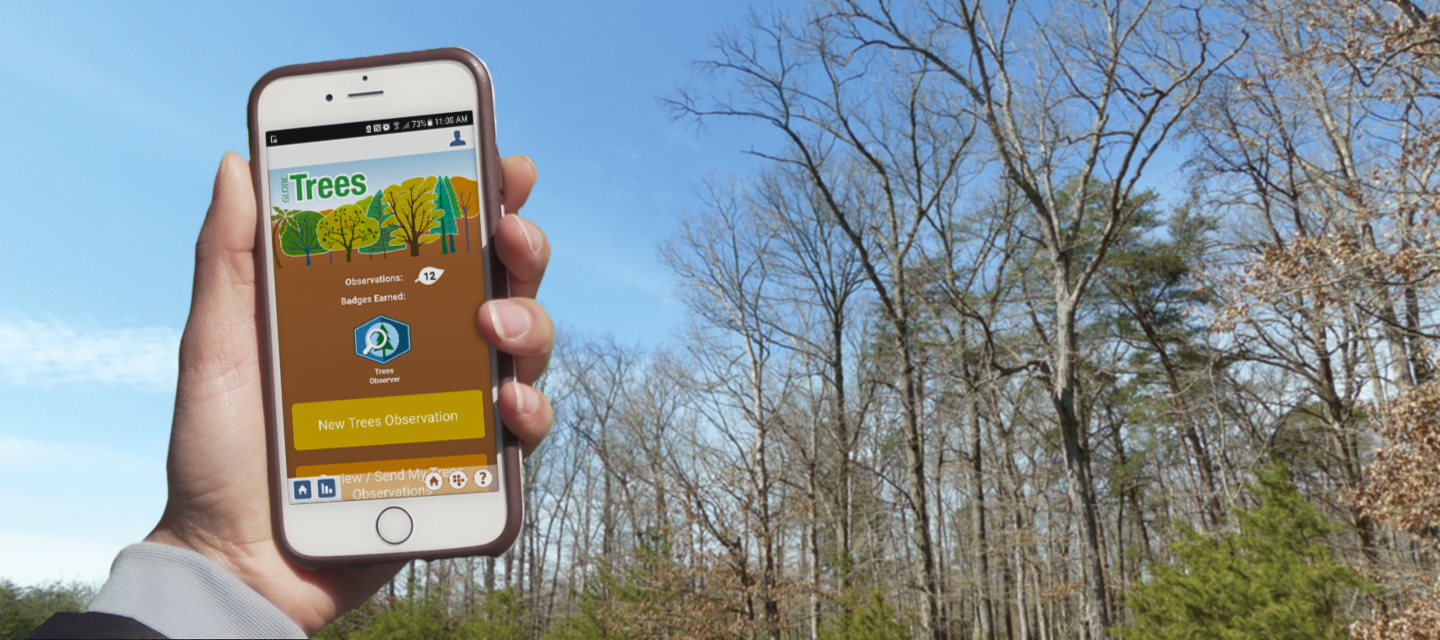Trees Overview - GLOBE Observer
What is GLOBE Trees?

GLOBE Trees is an app-based tool that will help you estimate tree height. Once you have downloaded the GLOBE Observer app and created an account, the Trees tool will guide you through the observation process. Required steps include selecting a tree and using your device to measure the angle from the bottom to the top of the tree, walking to the tree and counting your steps (to determine the distance) and reporting on surface conditions. The app will use that information to calculate an estimate of the tree’s height. Optional steps are taking a photograph of the tree and measuring the circumference of the tree. Even a basic observation without optional elements is valuable!
For more details about how to take observations, including tips and tricks, additional tutorials beyond what is in the app, and frequently asked questions about how to observe, visit the Taking Observations page. Our Resource Library includes additional activities, references, videos and book lists.
Why are my observations important?
Trees cool and moisten our air and fill it with oxygen and can help balance our carbon budget. Forests are considered one of the world’s largest banks for all of the carbon emitted into the atmosphere through natural processes and human activities. Tree height is the most widely used indicator of an ecosystem’s ability to grow trees. Observing tree height allows NASA scientists to understand the gain or loss of biomass which can inform calculations of the carbon that trees and forests either take in from or release into the atmosphere. Tracking how trees are changing over time can help us estimate the number of trees that make up an area. Learn more about the science of trees, and how NASA studies them, on the Trees Science page.
Student Research
In addition to research done by professional scientists, because GLOBE Observer is part of The GLOBE Program, which is active in thousands of schools across the world, citizen scientists are strengthening science education by providing data for student research.
Here are a few examples of student research reports related to trees:
"An Assessment of the Role Urban Trees Play in Modifying Weather in a City Park," by Mohamedhussin Najaf, Zaher Damen, Anas Saleh, students from Crestwood High School in Dearborn, Michigan, USA; GLOBE Teacher, Diana Johns; submitted to GLOBE on 10 March 2020.
"The Effects of Native Tree Species on Ambient Air and Surface Temperatures in Southeastern Michigan," by Zeina Jebara Itidal Bazzi, students from Crestwood High School in Dearborn, Michigan, USA; GLOBE Teacher, Diana Johns; submitted to GLOBE on 10 March 2020.
"An Assessment of Tree Attributes with Their Consequences and Impacts on a High School Campus," by Noor Abu-Rus and Zeina Jebara, students from Crestwood High School in Dearborn, Michigan, USA; GLOBE Teacher, Diana Johns; submitted to GLOBE on 10 April 2019.
"ICESat-2 - Tree Height Comparisons," by Lilyannah Dunigan, Thomas Hamilton, and Brady Jaskula, students from students from Shumate Middle School in Gibraltar, Michigan, USA; GLOBE Teacher, Jeff Bouwman; submitted to GLOBE on 09 April 2019.
For more research reports related to trees, visit the GLOBE Student Research Reports page (filtered by Biometry/Tree Height protocol).








